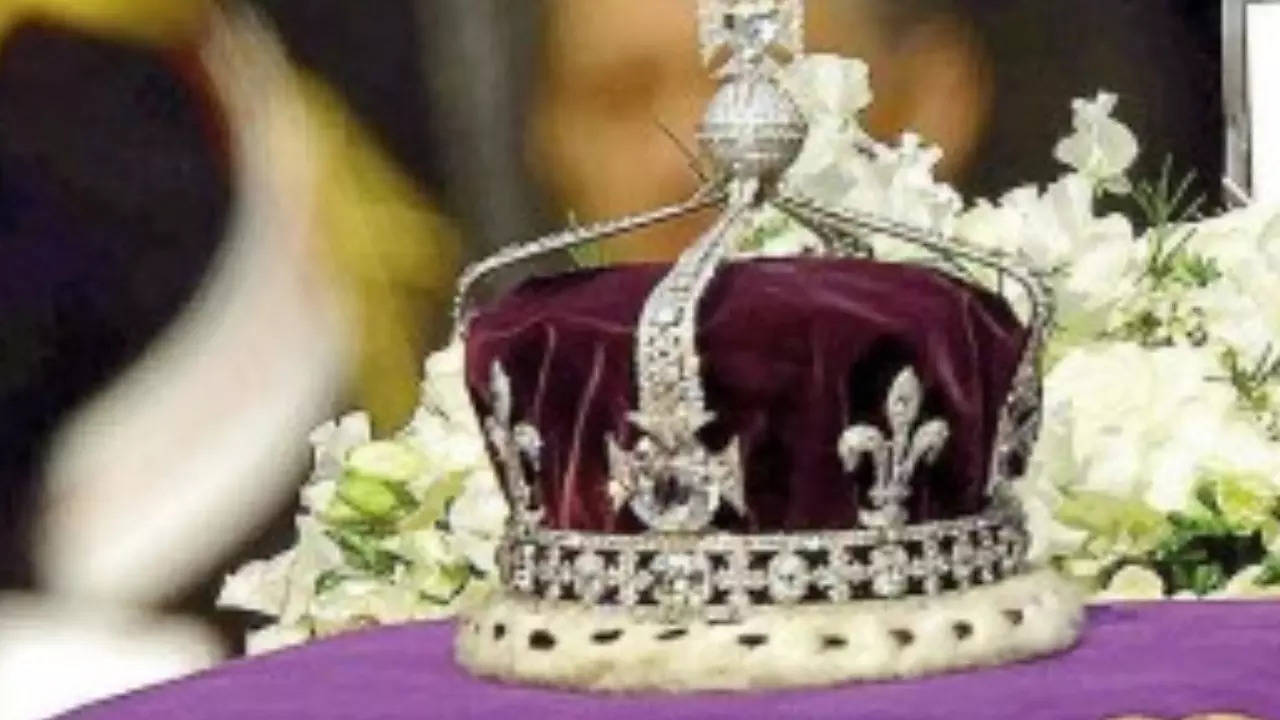LONDON: A new exhibition at the Tower of London will for the first time in Britain explore the history and origins of the disputed Koh-i-Noor— India has long demanded the return of the diamond — and will tell the priceless stone’s story as a “symbol of conquest, with many previous owners”.
On May 26 the Tower of London is set to transform Jewel House, where the crown jewels are kept under armed guard, with a new display exploring more stories than ever before about the history, origins and significance of the crown jewels, including the Koh-i-Noor, just weeks after the world witnesses the coronation of the King and Queen Consort on May 6.
Historic Royal Palaces, the independent charity which manages the Tower of London, said: “The history of the Koh-i-Noor, which is set within the crown of Queen Elizabeth the Queen Mother, will be explored.A combination of objects and visual projections will explain the stone’s story as a symbol of conquest, with many previous owners, including Mughal emperors, Shahs of Iran, emirs of Afghanistan, and Sikh maharajas.”
There will be a short film, which will includes a map that charts the Koh-i-Noor’s journey as it passed through the hands of many owners.
Buckingham Palace revealed last month that the Koh-i-Noor will not be used during the coronation of Camilla as Queen Mary’s Crown will be used rather than the crown of the late Queen Mother, in which the Koh-i-Noor is set. The Queen Mother’s crown made its last public appearance in 2002, resting atop the coffin of the Queen Mother for her funeral.
The Koh-i-Noor display will be accompanied by an Indian armlet set with a replica Koh-i-Noor, showing its dimensions before its re-cutting.
The rock crystals in the armlet represent the original form in which the Koh-i-Noor arrived from India before it was recut to conform to contemporary European tastes, reducing the stone from 191.03 modern carats to an oval of 105.6 carats.
After Queen Victoria’s death the stone has been mounted successively in the crowns of Queen Alexandra, Queen Mary and the Queen Mother.
The display explaining the story of the Koh-i-Noor will also be accompanied by Queen Alexandra’s crown frame of 1902.
The exhibition will explore the origins of all the current crown jewels, starting with the destruction of the medieval coronation regalia during the English Civil War.
The Queen Mary crown will be reset with the Cullinan III, IV and V diamonds for Camilla’s coronation. The story of the Cullinan diamond will also feature, with the hammer and knife used to make the first cuts to the huge diamond going on display in the Jewel House for the first time.
Charles Farris, historian for the history of the monarchy at Historic Royal Palaces, said: “From their fascinating origins to their use during the coronation ceremony, the new Jewel House transformation will present the rich history of this magnificent collection with more depth and detail than ever before.”
On May 26 the Tower of London is set to transform Jewel House, where the crown jewels are kept under armed guard, with a new display exploring more stories than ever before about the history, origins and significance of the crown jewels, including the Koh-i-Noor, just weeks after the world witnesses the coronation of the King and Queen Consort on May 6.
Historic Royal Palaces, the independent charity which manages the Tower of London, said: “The history of the Koh-i-Noor, which is set within the crown of Queen Elizabeth the Queen Mother, will be explored.A combination of objects and visual projections will explain the stone’s story as a symbol of conquest, with many previous owners, including Mughal emperors, Shahs of Iran, emirs of Afghanistan, and Sikh maharajas.”
There will be a short film, which will includes a map that charts the Koh-i-Noor’s journey as it passed through the hands of many owners.
Buckingham Palace revealed last month that the Koh-i-Noor will not be used during the coronation of Camilla as Queen Mary’s Crown will be used rather than the crown of the late Queen Mother, in which the Koh-i-Noor is set. The Queen Mother’s crown made its last public appearance in 2002, resting atop the coffin of the Queen Mother for her funeral.
The Koh-i-Noor display will be accompanied by an Indian armlet set with a replica Koh-i-Noor, showing its dimensions before its re-cutting.
The rock crystals in the armlet represent the original form in which the Koh-i-Noor arrived from India before it was recut to conform to contemporary European tastes, reducing the stone from 191.03 modern carats to an oval of 105.6 carats.
After Queen Victoria’s death the stone has been mounted successively in the crowns of Queen Alexandra, Queen Mary and the Queen Mother.
The display explaining the story of the Koh-i-Noor will also be accompanied by Queen Alexandra’s crown frame of 1902.
The exhibition will explore the origins of all the current crown jewels, starting with the destruction of the medieval coronation regalia during the English Civil War.
The Queen Mary crown will be reset with the Cullinan III, IV and V diamonds for Camilla’s coronation. The story of the Cullinan diamond will also feature, with the hammer and knife used to make the first cuts to the huge diamond going on display in the Jewel House for the first time.
Charles Farris, historian for the history of the monarchy at Historic Royal Palaces, said: “From their fascinating origins to their use during the coronation ceremony, the new Jewel House transformation will present the rich history of this magnificent collection with more depth and detail than ever before.”
